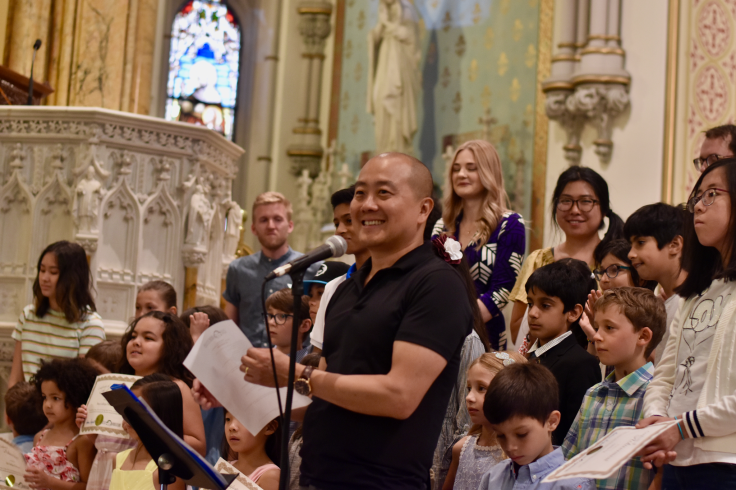Andrew Ingkavet's Mission to Make Musical Education Accessible to The Masses

Andrew Ingkavet, founder of the Musicolor Method, is on a mission to activate children's personal development through music by making it more adaptive, inclusive, and engaging. Ingkavet's method puts an emphasis on musical expression and sound, as opposed to more traditional approaches, which initially focus on notation and theory. This switch in focus allows children to begin playing music because of the fun of it, not to impress their parents or peers. The method allows preschoolers and differently-abled kids to begin composing their own songs and to connect with the music, rather than being concerned early on with where middle C stands on a staff.
Andrew's musical journey began when he was thirteen years old. He found a love for rock n' roll when listening to artists like Jimi Hendrix and The Rolling Stones. He started practicing guitar for up to nine hours a day and became obsessed with the instrument. With the development of his musical skills he was given a scholarship at New York University as a music education major with a double major in Jazz.
Upon graduation, he transitioned into the New York music business industry where he networked and marketed many large names, including Ozzy Osbourne, Guns N Roses, Europe, and so many more. He went on to work as a production assistant for MTV, traveling to Hong Kong to work as one of the first VJs for the network, going on to launch MTV Asia. Having developed a lifelong interest in technology, he also co-founded Lemon, the first digital agency in Asia. He subsequently returned to the US to work with ad agencies on web design projects that would later feed into his inspiration for the visual elements of his method.
Andrew's journey to developing the Musicolor Method began when his son was only three years old. Alejandro asked Ingkavet to teach him how to play piano and after a year Andrew began to search for a teacher. Surprisingly he couldn't find any teachers to work with a child below eight years old. As a result, Andrew became obsessed with solving this problem and bridging the learning gap, to help his son learn, and reconnect with his music teacher background. He consequently decided to focus full-time on the method.
He began to explore why children were dropping out of music class so young, or why they were even being told they weren't 'made' for music at such an early age. The high bar of having to learn the abstract concept of music theory before playing an instrument was putting off students and leaving music teachers feeling frustrated that so few children seemed to be interested in continuing to study.
He realized that the main problem was being able to convey a written form of communication to preliterate children. Bridging this gap, Andrew began to develop a new simplified form of color-coded music notation, honing and developing lesson plans each time he taught his son something new. He was delighted at how quickly Alejandro picked up the piano and within months had a waiting list of students eager to try out his method.
The Musicolor Method is designated into six phases. In the beginning, students are taught to associate colors with their coordinating notes. As they work through each phase, the students learn how to structure chords and songs, as well as being able to focus upon phrasing and coordination skills, before notation and more traditional music theory is introduced.
Andrew has faced a number of challenges in his time running the Musicolor Method. Piano teachers that still use traditional methods of teaching don't understand his curriculum and have often cast doubt on him. Despite this, Andrew currently has over 140 students enrolled in his program, with a growing waitlist, whereas many traditional schools struggle to maintain even a handful of students. On average, Andrew's students stay in the program from five to 10 years and he says they keep coming back because the method is a lot of fun and so easy to work through.
Ingkavet has found that his student's parents don't necessarily want their children to become professional musicians, but instead are more aware of the scientific research that proves the cognitive, emotional, and health benefits that result from learning to make music. They also want their kids to be able to enjoy the benefits of music and learning how to play in a stress-free environment. The Musicolor Method is a fun and healthy place for kids to come and begin a path to playing an instrument that they connect with.
"The Musicolor Method is a unique way for kids to have a better grasp at learning how to play an instrument. Instead of trying to teach them concepts of reading music, which can be difficult for kids, we introduce them to a fun system that gives them instant confidence while learning an instrument. The method is meant to be an easy onramp for all students that is age appropriate for younger and differently-abled children, activating life skills such as; pattern recognition, goal-setting, perseverance, public performance, listening, and social and emotional intelligence. That's the power of this method," says Ingkavet.





















